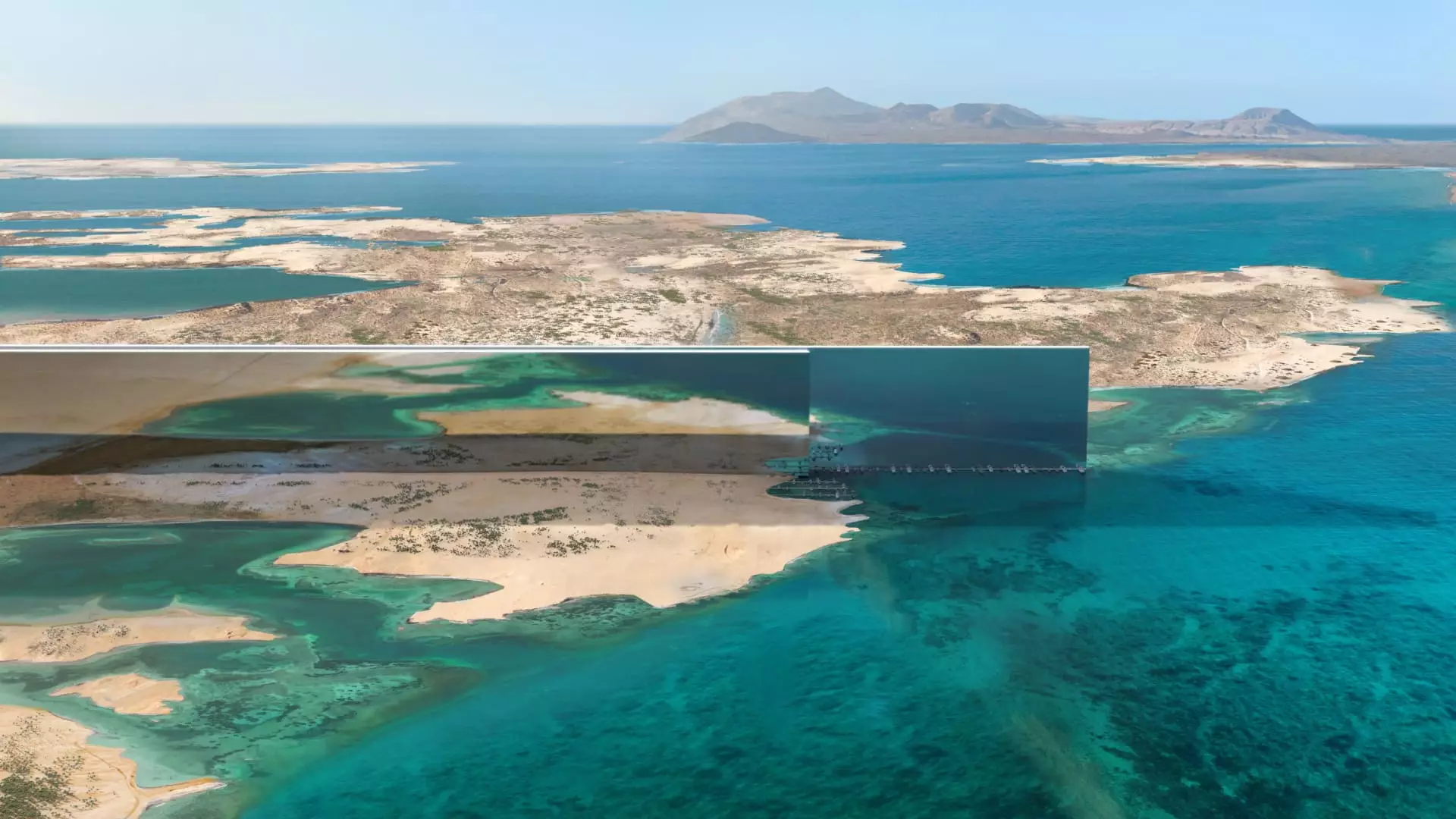Mega-projects such as Saudi Arabia’s The Line epitomize a relentless human desire to conquer nature and engineer a perfect future. Yet, beneath the shiny veneer of glass skyscrapers and sprawling high-tech infrastructures lies a sobering reality: such endeavors often succumb to the unforgiving constraints of economics, technology, and social feasibility. The recent strategic review of The Line signals a pivotal moment of self-criticism—an acknowledgment that bold visions must be tempered with practicality. This isn’t simply an exercise in budget trimming; it’s a philosophical reckoning about whether these ambitious constructs are truly sustainable or whether they are expensive illusions fueled by hubris.
The core issue isn’t just the cost — estimated to run as high as $1.5 trillion — nor the technical hurdles posed by creating a city that defies traditional urban models. It’s the fundamental question of whether society should continue to chase such grandiosity in an era where economic, environmental, and geopolitical pressures have intensified. The precarious stance of global oil markets underscores the volatility of Saudi’s development ambitions, revealing the fragility of economic forecasts that once seemed invincible. If the foundation of this project rests on overoptimistic projections and unchecked enthusiasm, can it ever truly survive the critical tests of feasibility?
Overpromising and Underperforming: The Pitfalls of Excessive Idealism
Historically, mega-projects have been plagued by a tendency to overpromise, driven by a desire to impress stakeholders and secure funding. Neom’s The Line is no exception. Reports of “yes-man” consultants and overly optimistic forecasts cast a pall over its future viability. These inflated projections create a dangerous disconnect between aspiration and reality, fostering a cycle where initial enthusiasm leads to inflated expectations—only to be followed by inevitable recalibrations that threaten to undermine trust among investors, citizens, and international observers.
Leadership’s failure to manage expectations effectively reveals a deeper flaw: an overreliance on technological prowess and visionary planning without sufficient contingency strategies. When projects of this magnitude are built on only the most optimistic assumptions, they become fragile constructs, highly vulnerable to economic downturns, technological setbacks, or political shifts. The recent reassessment signals a fragile recognition that blinkering reality risks turning these ambitious dreams into white elephants—costly monuments to overconfidence rather than sustainable urban centers.
Economic Realities Confront the Bright Future
The shift in oil prices exemplifies how fragile the economic foundations of these projects are. As oil revenues have declined from recent highs, Saudi Arabia’s financial appetite for mega-ventures must also contract. This isn’t a sign of failure—it’s a necessary correction, an acknowledgment that the era of unlimited fiscal support is over. Adjusting the scale and scope of The Line is a pragmatic response, not a defeat. It reflects a growing understanding that rapid, unrestrained expansion is incompatible with current fiscal realities.
This economic recalibration, however, invites a broader question: should countries continue to pursue futuristic megaprojects that prioritize spectacle over sustainability? The danger lies in neglecting the social and environmental costs of sprawling developments cloaked in technological fantasies. The emphasis on high-speed rail and colossal skyscrapers overlooks the human element—affordability, livability, and environmental impact. Such projects risk becoming symbols of excess, alienating local populations and fostering cynicism among global audiences who are increasingly attentive to issues of sustainability and social equity.
Toward Smarter, More Responsible Urban Innovation
This moment of reflection should be viewed not merely as a setback but as an opportunity to redefine what success looks like. Instead of grandiose visions that threaten to engulf entire budgets and reputation, the focus should transition toward smaller, more adaptable projects. Innovation doesn’t always demand spectacle; it requires responsibility, transparency, and humility.
Sustainable urban development in the Middle East and beyond should prioritize resilience, community engagement, and environmental stewardship over sheer size and technological bravado. Megastructures can be inspiring, but their longevity hinges on realistic planning, inclusive design, and a conscious acknowledgment of limitations. True progress lies in balancing visionary ambition with pragmatic restraint—an approach that fosters trust, ensures fiscal sustainability, and ultimately guarantees that urban futures are humane rather than utopian.
The Dangerous Lure of Futuristic Myths
Projects like The Line illustrate a broader cultural obsession with rewriting the future—yet often at the expense of understanding our present constraints. These visions, while captivating, distract us from pressing contemporary issues: climate change, economic inequality, and social cohesion. By investing enormous sums into futuristic cityscapes, governments risk neglecting the urgent needs of their citizens and the planet.
Recognizing the limits of technological optimism is crucial. Not every idea needs to be realized at once, and not every city has to become a symbol of technological perfection. Responsible leadership involves dismantling myths of infallibility and embracing complexity—acknowledging that true innovation often unfolds through incremental, pragmatic steps rather than sweeping gestures.
Lastly, the self-critical reevaluation of projects like The Line offers a valuable lesson: ambition must be grounded in reality. As tempting as it is to chase the next shiny idea, wisdom lies in recognizing when to adapt, downscale, or even abandon dreams that cannot withstand the test of time and truth. Only then can cities, nations, and societies build sustainable futures that earn their place—not just in the history books, but in the enduring wellbeing of their people.

